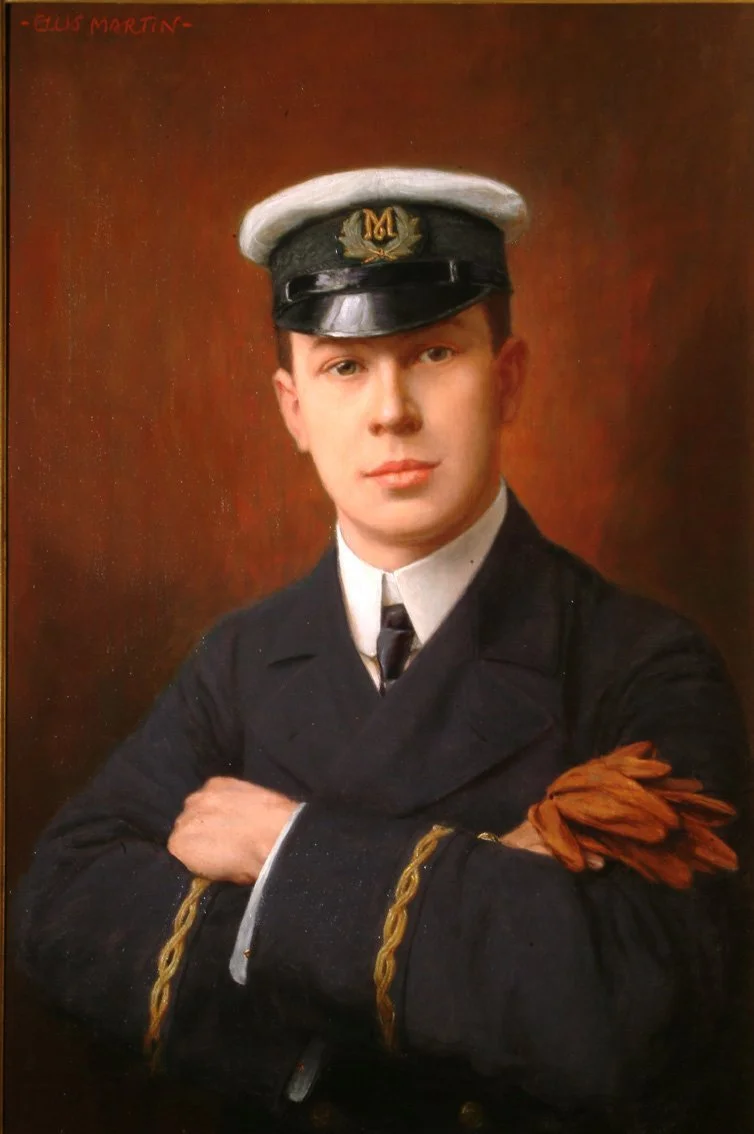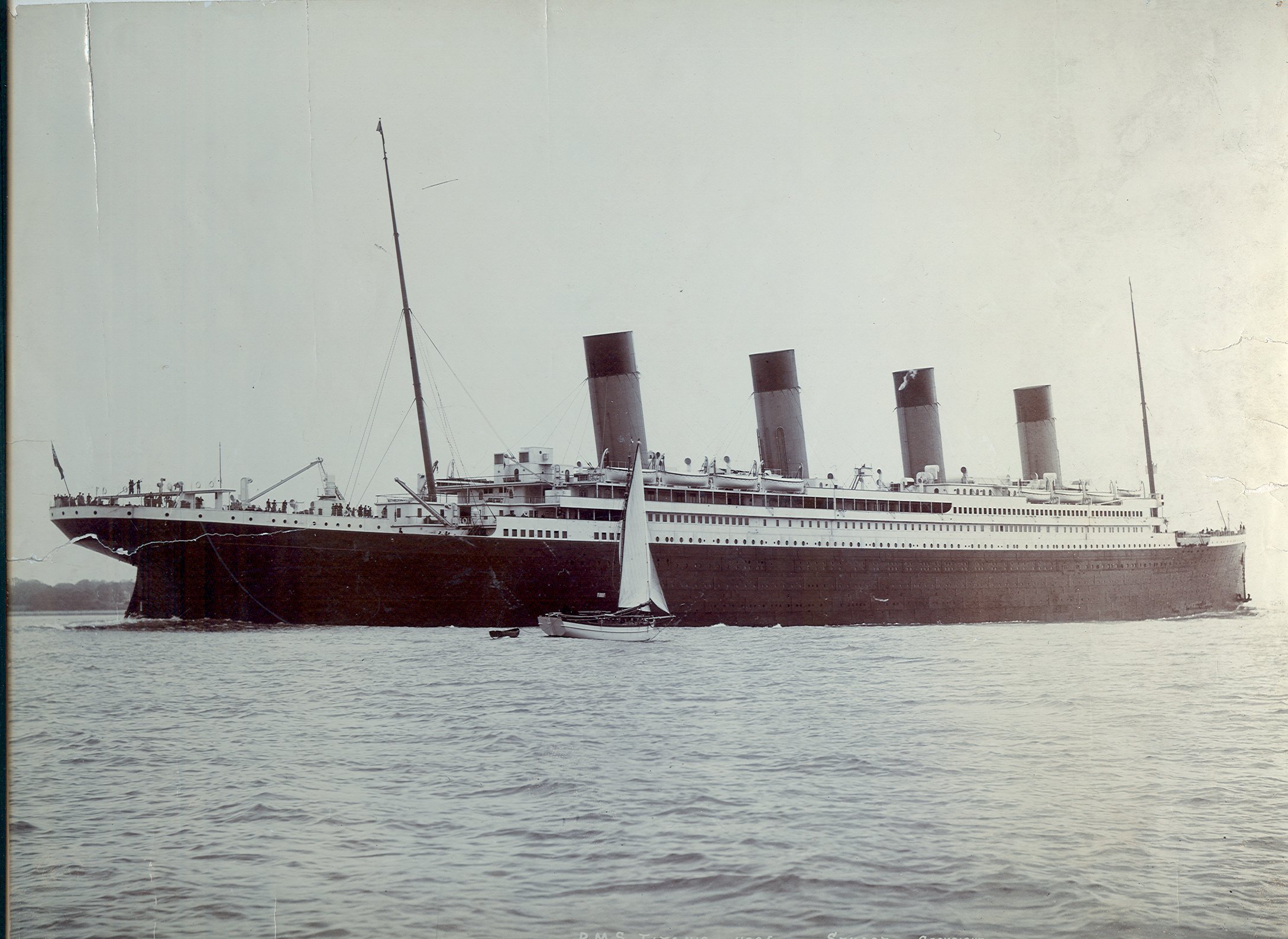John George (Jack) Phillips, 1887-1912, Chief Wireless Telegraphist on the Titanic
Jack’s Early Life and Career
John George Phillips, known as ‘Jack’ was born in Godalming, Surrey, on the 11th April 1887 at 11 Farncombe Street. He was the son of George Alfred Phillips and his wife, Ann (née Sanders). They came from Trowbridge in Wiltshire, from a family of weavers. In 1881 the family lived in Deptford Lower Road, Rotherhithe, and George was listed as a draper, with this wife and twin daughters, Elsie and Ethel aged 7, born in Kent.
They moved to Godalming c.1883 when they are listed in the Godalming Directory living in Farncombe Street. His father was manager of Gammons, a draper’s shop owned by the Gammon brothers. The family lived above the shop, and Jack was born there in 1887. The house no longer remains. The 1911 census shows that there were five children born to George and Ann but only three survived. His twin sisters never married.
Jack attended a local private school in Hare Lane run by Fanny Stedman. He then went to the St John’s Street School next to the Parish Church of Farncombe, St John (seen on the right in this photo): The school is now Farncombe Day Centre. As a young boy Jack sang in the choir at the Parish Church where there is a brass memorial plaque.
Oil painting of Jack Phillips by Ellis Martin, from a photograph taken by Jennie Stedman of Farncombe. Godalming Museum Collection, B004.34.
Jack was later educated at the Godalming Grammar School, now the public bar of the Red Lion Public House under the headmaster Mr. Charles Elworthy; seen here on the left hand side of the pub. In 1902 on leaving school he worked at the local Post Office (now the HSBC Bank) in the High Street, as a telegraphist. Here he learned Morse code under the postmaster, Mr Walter Richard Williams, until March 1906.
In 1906 Jack joined the Marconi Company’s Wireless Telegraphy Training School at Seaforth Barracks in Liverpool. On completion of the course, he headed the list of successful candidates in the Postmaster General Examinations. In August after finishing his training he was posted as Junior Wireless Officer on the White Star Line vessel, Teutonic. During the next three years he served on various liners, including the Lusitania, Mauritania, Campania, Oceanic, Corsican, Canada, Victoria, Danube, and Pretorian.
In 1908 Jack was transferred to the Marconi Transatlantic Station at Clifden, a high power transmitting station on the west coast of Ireland in County Galway. He spent three years at Clifden, working as an operator transmitting and receiving messages to and from the Marconi sister station at Glace Bay, Nova Scotia. In 1911 he left Clifden and returned to sea on the Adriatic. In March 1912 he was sent to Belfast to take up the post of Chief Wireless Telegraphist on the new White Star Liner, Titanic, then being fitted out at the Harland and Wolff shipyard. Lord Pirrie was Chairman of Harland and Wolff, and had bought Witley Park, near Godalming, in 1909.
RMS Titanic. Godalming Museum Collection, 3431.
RMS Titanic
Jack was appointed Chief Wireless Telegraphist on the new, “unsinkable” luxury Titanic, with Harold Bride as his junior operator. The wireless equipment on board was the most modern and most powerful of any merchant ship then afloat. It had a range of 250-400 miles in daytime and at night, when conditions for transmitting and receiving were more favourable, it occasionally spanned 2,000 miles. It is recorded that Jack had confided in a friend that while he was proud to be chosen to serve on the Titanic he would have preferred a smaller vessel. Jack expressed a dread of icebergs.
In the 24 hours preceding the fateful collision with an iceberg on the 14th April 1912, the two wireless operators had been busy repairing a fault in the transmitter. As a consequence, Jack had very little sleep before commencing his watch from 8.00pm to 2.00am. It was in the hours preceding the collision that the liner achieved its highest speed of 22.5 knots. Thus, on impact, the iceberg inflicted considerable damage to many of the watertight compartments, causing it to sink at the bow.
Jack was sending personal messages from the passengers to America - this was his job with Marconi - when he was first instructed by the captain to advise other vessels in the area of the collision with the berg. Due to the much publicised and widely believed claim that the Titanic was an unsinkable ship, almost all on board carried on as before and other ships receiving this message did not immediately prepare to head for the given position of the stricken liner. However it was soon realized that the Titanic was sinking and Jack was instructed by Captain Edward Smith to send out CQD messages requesting immediate assistance from all vessels in the area. Later Smith requested Jack to change to SOS.
From this time onwards Jack stayed at his post, sending out the distress calls, advising on the latest position of the Titanic, urging and convincing other ships to assist in the rescue of those taking to the boats. Jack stayed at the transmitter while Harold Bride put a lifejacket on him after the captain gave the instruction, “Every man for himself” and had personally thanked the two wireless operators for their perseverance. Bride was sent off by Phillips to save himself, while Jack continued transmitting. It was as a consequence of his total devotion to duty that Jack Phillips lost his life and has since become widely admired. It was this bravery and persistence which reduced the magnitude of the disaster in respect of lives lost. Jack's last message was picked up by the Virginia of the Allen Line at 2.17am, and the Titanic foundered at 2.20am. After this everyone adopted SOS as the primary distress call.
Phillips Memorial
The Phillips Memorial Cloister, a garden designed by Gertrude Jekyll, with a magnificent brick cloister 80 feet square designed by Hugh Thackeray Turner, was laid out, built and opened exactly two years to the day after the sinking. The memorial is situated between the River Wey and Godalming Parish Church in the Phillips Memorial Park.
Within the cloister, the Wireless and Telegraph Company commissioned and had erected a memorial stone tablet to the perpetual honour of this brave man, who died four days after his 25th birthday, leaving behind a lasting example of putting lives of others before one's own. For the 90th anniversary of the loss of the Titanic, in April 2002, Godalming Town Council refurbished the Phillips family grave of Jack's father, George, and his mother, Ann, and twin sisters, Elsie and Ethel, in Nightingale Cemetery. In the centre of a six foot square curb all in white marble, is an obelisk in the shape of an iceberg, a fitting memorial to Godalming hero Jack Phillips
In 2012 the Phillips Memorial Park cloister and garden was refurbished with lottery funding and a book was published, Phillips Memorial Park: An Arts and Crafts Movement Tribute to a Hero of the Titanic. In 2012 the Museum held an Exhibition on ‘Jack Phillips and the Titanic’, and the town organised a series of events to celebrate the centenary of the loss of the Titanic. A booklet by Mandy Le Boutillier A Farncombe Lad was published and is on sale in the Museum. A leaflet, Jack Phillips Trail, a walk around the town, is also available in the Museum. In 2017 a blue plaque was unveiled in Farncombe to mark the birthplace of Jack.


